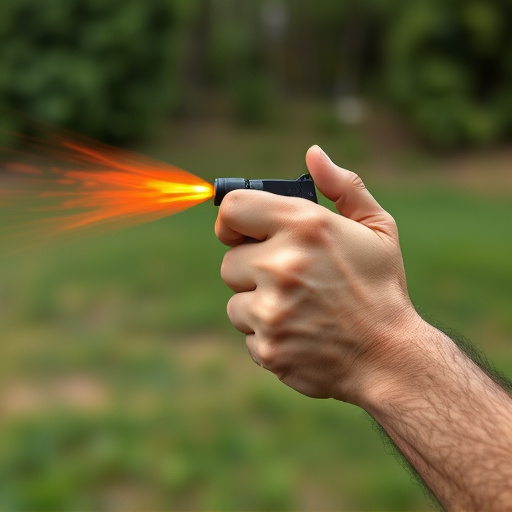Riot control agents like pepper spray are powerful tools for law enforcement, regulated with strict guidelines due to potential risks. To legally carry pepper spray, officers and individuals must undergo specific training, obtain permits or certifications/licenses after background checks, understand jurisdiction-specific rules, and adhere to restrictions on spray type, capacity, and carrying locations. Best practices include comprehensive training, secure storage, adherence to local laws, regular inventory checks, and responsible use for personal protection while respecting legal limitations.
Riot control agents, such as pepper spray, are powerful tools employed by law enforcement to maintain public safety during high-risk situations. However, their use is tightly regulated due to potential risks and civil liberties concerns. This article explores the legal framework surrounding riot control agents, focusing on when and how to legally carry pepper spray, along with best practices for safe handling and storage. Understanding these guidelines is essential for both professionals and citizens to ensure responsible and lawful use.
- Understanding Riot Control Agents and Their Legal Framework
- When and How to Legally Carry Pepper Spray
- Best Practices for Safe Handling and Storage of Pepper Spray
Understanding Riot Control Agents and Their Legal Framework
Riot control agents, often referred to as less-lethal weapons, are specialized chemical compounds designed to disrupt and disperse rioting or aggressive crowds. These agents, including pepper spray, tear gas, and batons with built-in chemical agents, operate by causing temporary physical discomfort or sensory disruption, enabling law enforcement to restore order safely. The legal framework surrounding these tools is complex and varies significantly from one jurisdiction to another.
In many regions, the use of riot control agents is strictly regulated, and officers must undergo specialized training to deploy them legally and responsibly. For instance, pepper spray, a popular choice for its quick-acting and non-lethal properties, can only be carried and used by authorized personnel under specific guidelines. Law enforcement agencies typically require officers to obtain permits or certifications to legally carry such agents, ensuring they understand the potential risks and are equipped to handle any unforeseen consequences.
When and How to Legally Carry Pepper Spray
Carrying pepper spray, also known as oleoresin capsicum (OC) spray, is a powerful tool for self-defense and personal safety, but it comes with legal considerations that must be understood by law enforcement officers and civilians alike. The use and possession of pepper spray are regulated differently across jurisdictions, so knowing the local laws is essential to ensure compliance and avoid potential consequences.
To legally carry pepper spray, individuals typically need to obtain a permit or license from relevant authorities. This process often involves passing a background check, completing a training course on safe handling and use, and demonstrating proficiency in deploying the spray. Some jurisdictions have specific restrictions on the type of pepper spray allowed, its capacity, and the areas where it can be carried (e.g., in a vehicle or on one’s person). Understanding these regulations is crucial before considering pepper spray as a defense mechanism.
Best Practices for Safe Handling and Storage of Pepper Spray
When it comes to handling and storing pepper spray, law enforcement officers must adhere to strict best practices for safety and compliance with how to legally carry pepper spray. Firstly, all personnel should receive comprehensive training on its proper use, including understanding the legal implications of misuse or unauthorized distribution. Pepper spray must be stored in secure, locked containers, separate from other equipment and out of reach of unauthorized individuals. Ideal storage locations include locked safes or cabinets in a designated area of the station or vehicle.
During transport, pepper spray should be carried in its original packaging, clearly labeled, and secured to prevent accidental discharge. Officers must familiarize themselves with local laws and regulations regarding the legal carrying of pepper spray, including restrictions on quantity and where it can be stored or used. Regular inventory checks ensure that supplies remain adequate and help prevent misuse or loss, thereby promoting safe practices and responsible use in accordance with how to legally carry pepper spray.
Riot control agents, such as pepper spray, are powerful tools for law enforcement, but their use is strictly regulated. Understanding the legal framework surrounding these agents and adhering to best practices for handling and storage is essential. Knowing how and when to legally carry pepper spray, as outlined in this article, ensures that officers can maintain public safety while respecting civil liberties. By following these guidelines, law enforcement agencies can effectively navigate the use of riot control agents, fostering a safer and more secure environment.
